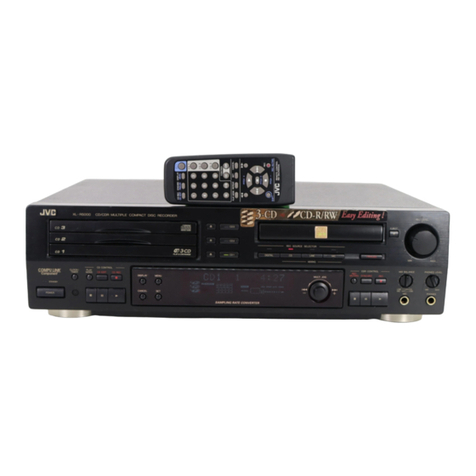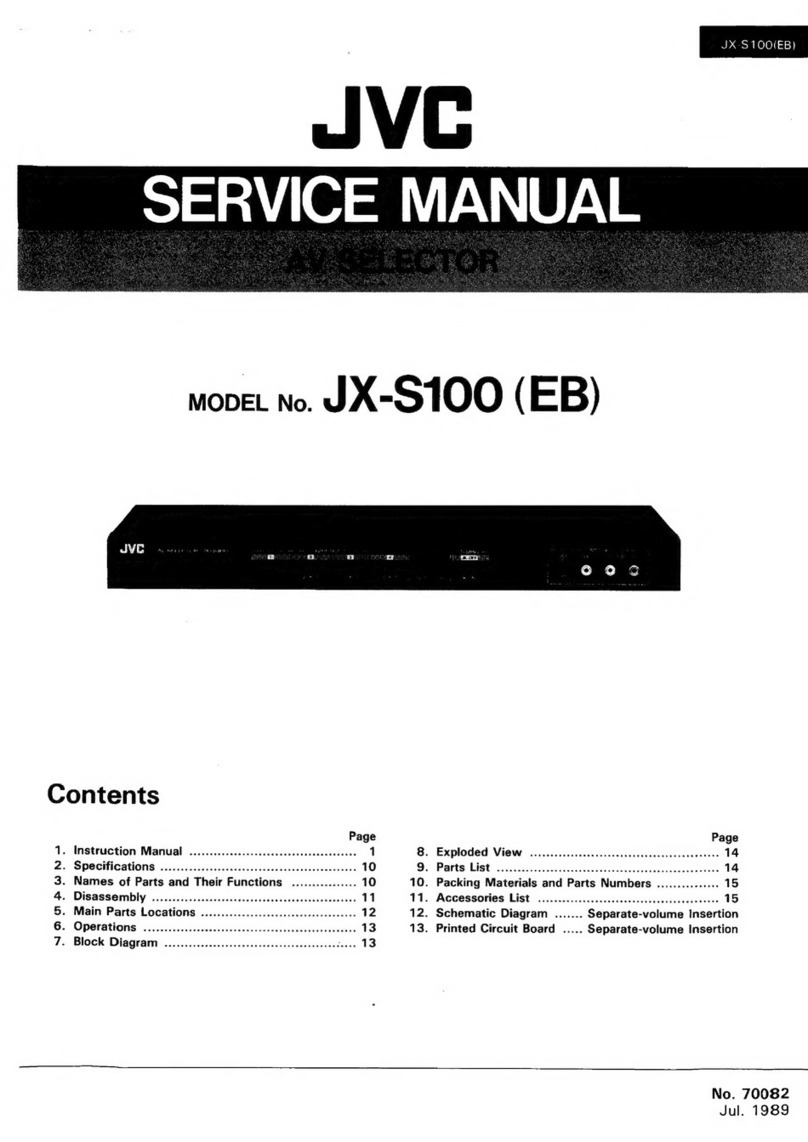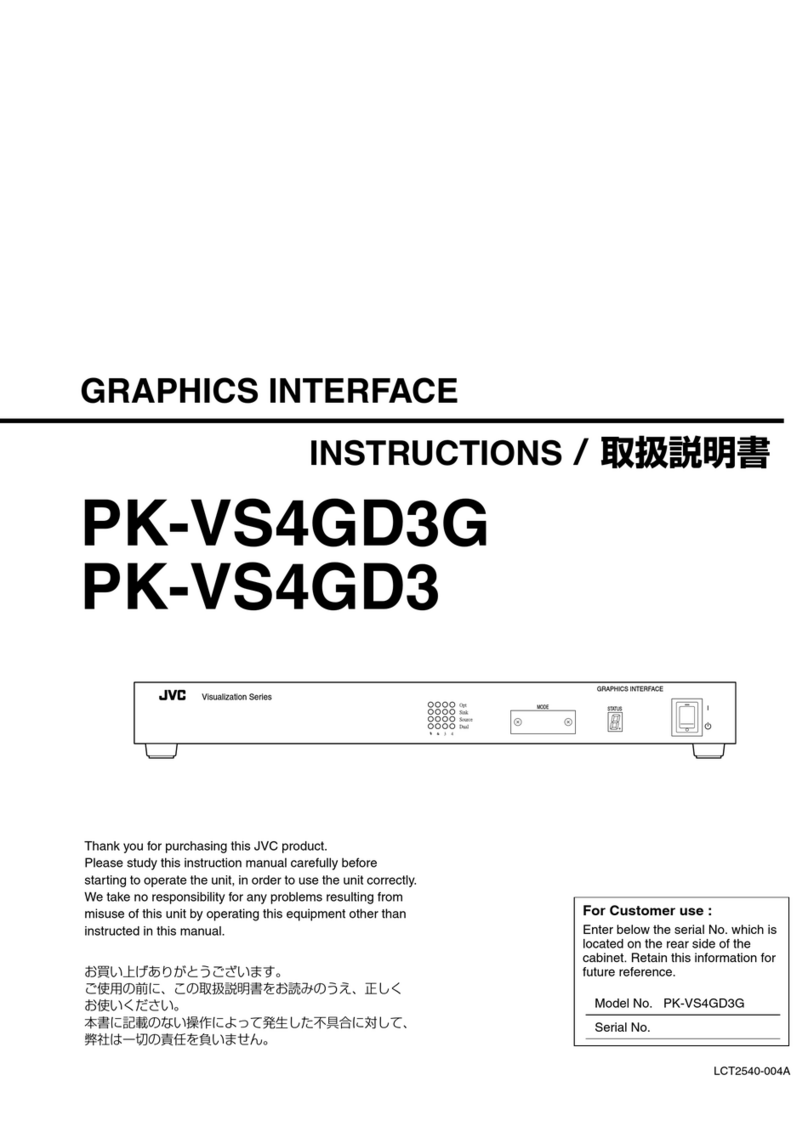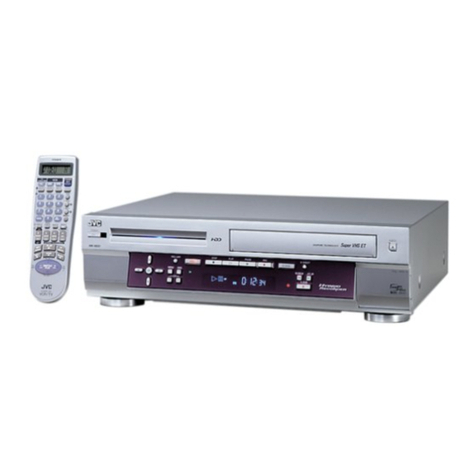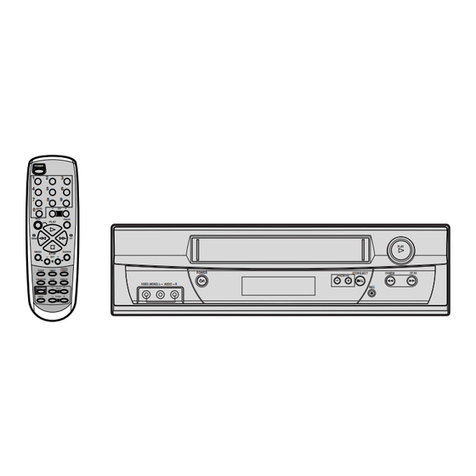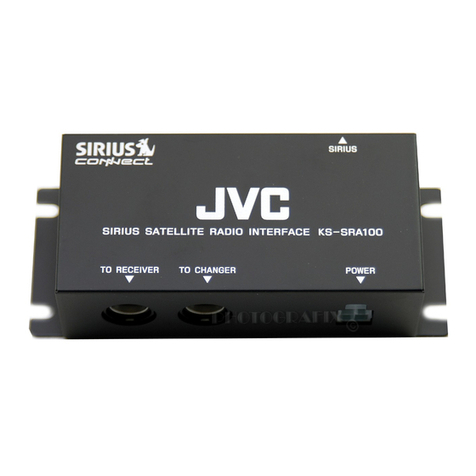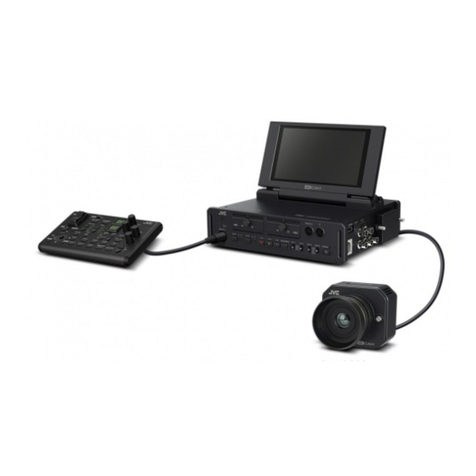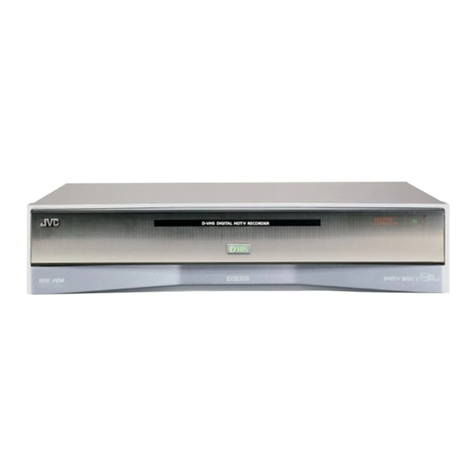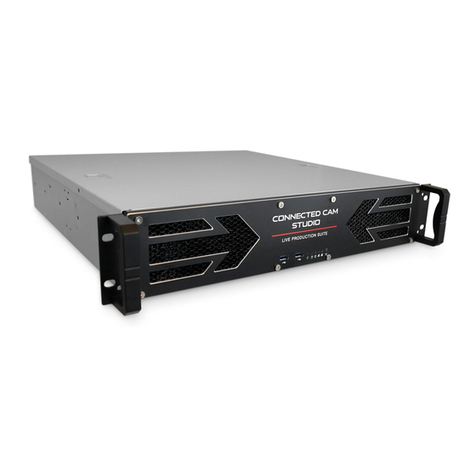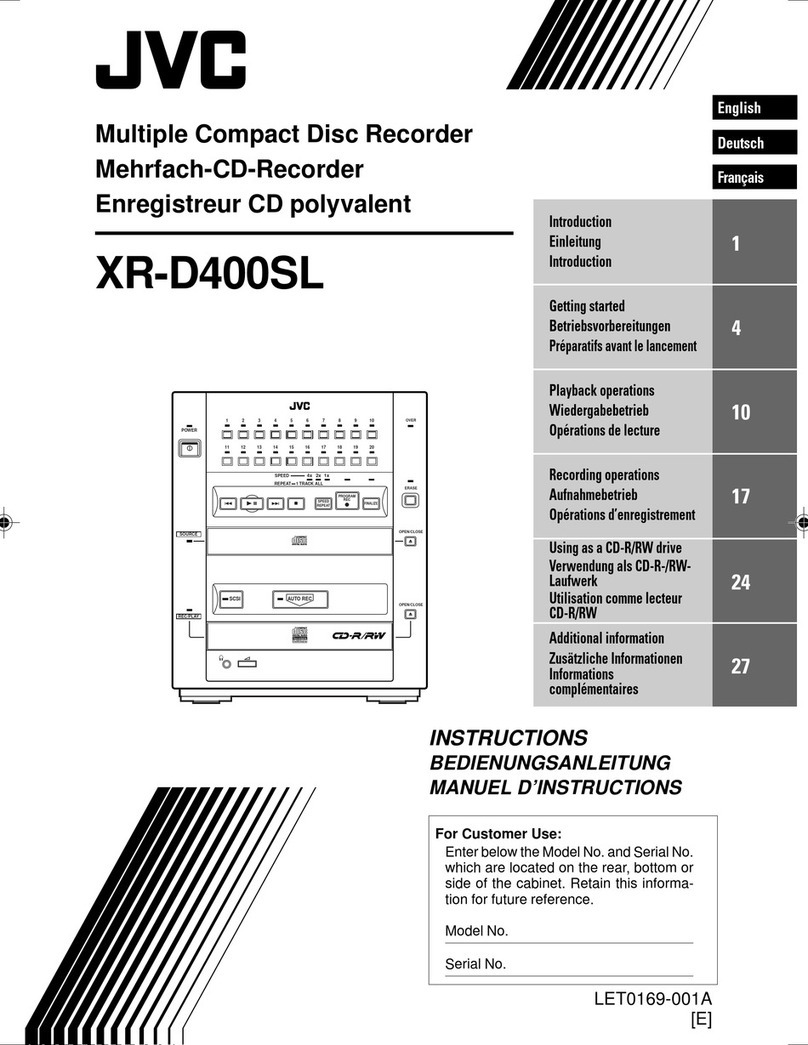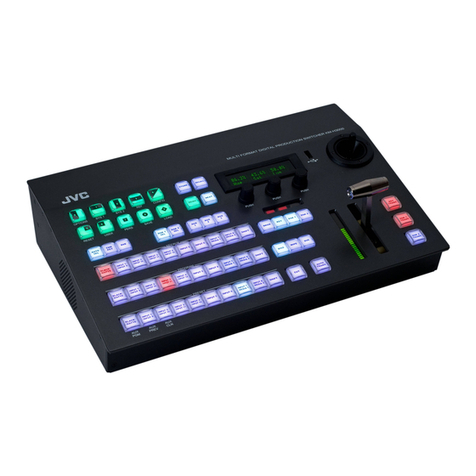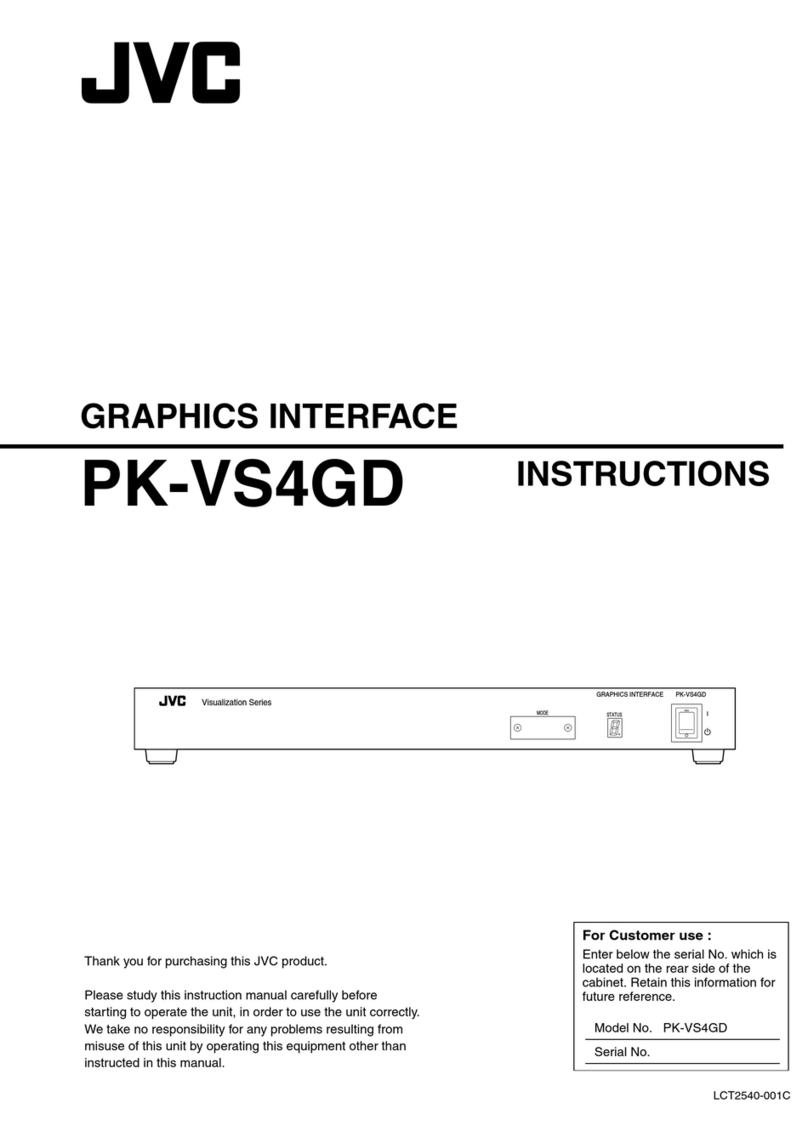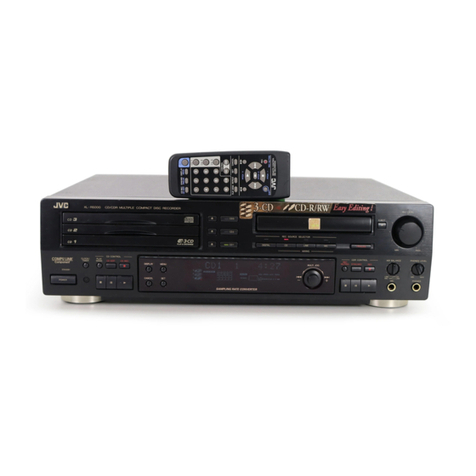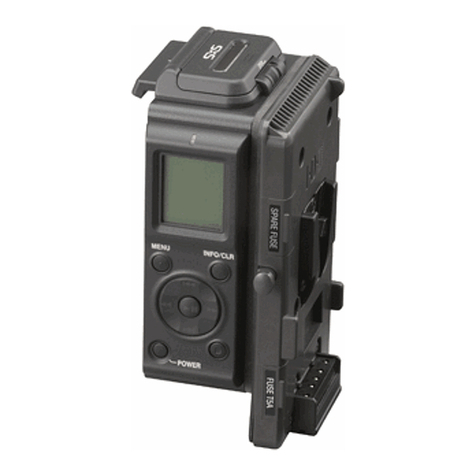
.
Netzschalter
(POWER)
Wird
dieser
Schalter
auf
(=)
gedriickt,
so
leuchten
im
Anzeigenfenster
die
Anzeigen
der
Schalter
auf,
die
einge-
schaltet
wurden
sowie
die
Leuchtpunkte
der
Spektral-
analyse
(SPECTRUM
ANALYZER).
Nochmaliges
Driicken
(
ML
)
schaltet
ab.
.
Mikrofonbuchse
(MIC)
Sie
ist
nicht
zur
Aufnahme
oder
Mischen
des
Mikrofon-
sounds
gedacht,
sondern
um
das
Klangspektrum
musikali-
scher
Instrumente
oder
Stimmen
mit
dem
eingebauten
SPECTRUM
ANALYZER
zu
Uberwachen.
.
Mikrofon-Dampfungsschalter
(MIC
ATTENUATOR)
~20dB:
Stellen
Sie
hierauf
ein,
wenn
die
Tonquelle
(-—
)
ungewohnlich
laut
oder
die
Empfindlichkeit
des
angeschlossenen
Mikrofons
hoch
ist.
O
dB
(31):
Fir
normale
Tonquellenanalyse.
.
Mikrofon/Eingangs-Schalter
(MIC/LINE)
MIC
(—):
Bei
Gebrauch
des
Mikrofons
zur
Uberpriifung
des
Sounds.
LINE:
Normalerweise
diese
Einstellung,
auRer
wenn
(=)
Sie
ein
Mikrofon
benutzen.
.
Pegelregler
(DISPLAY
LEVEL)
Stimmen
Sie
die
diesbeziigliche
Darstellungs-Lage
auf
dem
Spektralanalysator-Anzeiger
so
ab,
dal’
sogar
niederpegelige
Signale
in
einer
leicht
abzulesenden
Stellung
angezeigt
werden.
Dieser
Regler
hat
keinen
Effekt
auf
den
Klang-
pegel
des
Ausgangs.
.
Schalter
fiir
SEA-Charakteristik
(SEA
CHARACTER)
REVERSE:
Diese
Einstellung
bewirkt
umgekehrte
Rege-
(—)
lungs-Charakteristika,
was
besonders
zweck-
maRig
zur
Eliminierung
von
Bandrauschen
ist.
Insbesondere
bei
Verwendung
von
Ban-
dern,
die
mit
SEA-Klangregelung
aufgenom-
men
und
wiedergegeben
werden.
Beziehen
Sie
sich
fir
weitere
Einzelheiten
auf
den
Abschnitt
‘‘Anwendung”’
auf
Seite
14.
NORMAL:
Bei
normaler
Benutzung
auf
diese
Stellung
(=)
stellen.
.
SEA-Schalter
DEFEAT:
Zur
Umgehung
der
SEA-Schaltung.
Dies
(-—)
ist
besonders
zweckmaRig
zur
Uberpriifung
des
durch
SEA
angepa&ten
Signals
und
fiir
einen
Vergleich
mit
dem
Originalklang.
Der
Netzschalter
(POWER)
kann
bei
dieser
Einstellung
auf
OFF
gestellt
sein.
ON
(m2):
Verwenden
Sie
diese
Einstellung
bei
normaler
SEA-Anpassung.
Wenn
dieser
Schalter
auf
DEFEAT
gestellt
ist,
drucken
Sie
thn
noch-
mals
fiir
die
ON-Stellung.
10.
11.
.
Dampfungsschalter
(ATTENUATOR)
-6
dB:
Dieser
Schalter
wird
zur
Dampfung
bei
hohen
{
—a}
dynamischen
Bereichen
verwendet,
wie
sie
bei
Live-Darbietungen
oder
hochpegeligen
Signalen
auftreten.
Bei
normaler
Verwendung
ist
diese
Einstellung
nicht
notwendig.
O
dB
(2):
Diese
Einstellung
bei
normaler
Bedienung
be-
nutzen,
.
SEA-Aufnahmeschalter
(SEA
REC)
ON
(-—):
Zur
Aufnahme
von
durch
SEA
angepa&ten
Signalen.
OFF
(m):
Fir
Tonbandaufnahmen
unter
Umgehung
der
SEA-Schaltung.
Wenn
dieser
Schalter
auf
ON
gestelilt
ist,
driicken
Sie
ihn
nochmals
fur
die
OF
F-Stellung.
|
Bandmith6r-Schalter
(TAPE
MONITOR)
ON
(—):
Stellen
Sie
den
Schaiter
in
diese
Stellung,
wenn
Sie
das,
an
den
SEA-60
angeschlossene
Ton-
banddeck
héren
wollen.
Wenn
Sie
ein
Drei-
Tonkopf-Tonbanddeck
benutzen,
k6nnen
Sie,
durch
Einstellen
dieses
Schalters
auf
ON,
eine
Hinterbandkontrolie
durchfuhren.
OFF
(m2):
Stellen
Sie
den
Schalter
in
diese
Stellung,
auer
Sie
wollen
das,
an
den
SEA-60
angeschlossene
Tonbanddeck
horen.
S.E.A.-Regler
Der
SEA-Mehrbereichsklangregler
teilt
das
Tonspektrum
von
31,5
Hz
bis
16
kHz
in
10
Frequenzbander
ein,
mit
Mittenfrequenzen
in
Intervallen
von
einer
Oktave,
be-
ginnend
von
1
kHz,
in
beiden
Richtungen.
Wenn
der
Regler
auf
‘0’
gestellt
ist
(Mittelstellung),
ist
der
Frequenzgang
flach.
Die
Empfindlichkeit
kann
durch
Hoch-
oder
Herunterschieben
des
Reglers
um
+12
dB
verandert
werden.
31,5
Hz:
Niedrigster
Frequenzbereich
fur
Schallplatten-
aufnahmen.
Geben
Sie
durch
Hochschieben
des
Reglers
einen
sehr
tiefen
BalSklang
wieder,
wodurch
Sie
ein
Gefithl
des
‘Dabeiseins’’
erhalten.
Wenn
er
heruntergeschoben
ist,
funktioniert
er
wie
ein
Niederfrequenzfilter
und
eliminiert
Brummen
und
Rumpelgerausch.
Schieben
Sie
ihn
zur
Anhebung
der
sehr
tiefen
BaRwiedergabe
von
Orgel,
Schlagzeug
und
Kontrabaf&
nach
oben.
Durch
Hochschieben
des
Reglers
erhalt
der
Klang
Gleichma&igkeit
und
Festigkeit.
Durch
Herunterschieben
des
Reglers
werden’
die
unsauberen’
Klang-
charakteristika
von
Niederfrequenzen
eli-
miniert.
Schieben
Sie
den
Regler
zur
Erweiterung
des
tiefen
Tons
nach
oben.
Schieben
Sie
thn
nach
unten,
um
den
durch
gro&e
Flachen
im
Raum
erzeugten,
unsauberen
Klang
zu
eliminieren.
Dieser
Frequenzbereich
ist
die
Basis,
auf
der
Musik
erzeugt
wird.
Schieben
Sie
diesen
Regler
nach
oben,
um
auf
thre
Musik
entscheidend
einzuwirken.
63
Hz:
125
Hz:
500
Hz:
